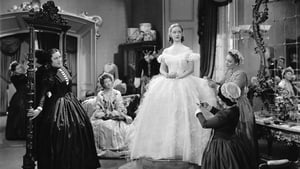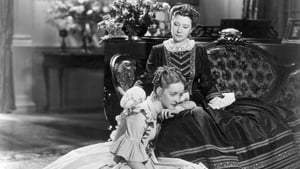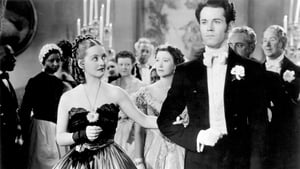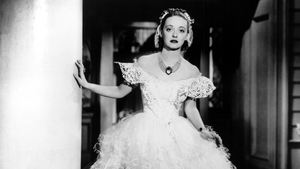Video Sources 0 Views
- Watch trailer
- Jezebel 1938 Colorized

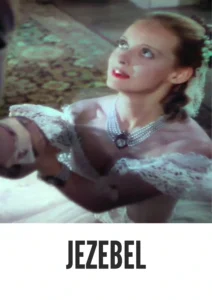
Synopsis
Table of Contents
ToggleScandalous Belle in Old New Orleans: Jezebel (1938) in Vibrant Color

Step back in time with Jezebel, a captivating period drama from 1938, now beautifully colorized for a viewing experience like never before. This film, starring Bette Davis, delivers a compelling story of pride and societal clashes in antebellum New Orleans. Perfect for fans of classic romances and historical dramas, this HD download brings a timeless story of love and redemption to your screen. Often compared to Gone With The Wind, see the film that helped Bette Davis win Best Actress at the Academy Awards.
Jezebel Storyline: A Southern Belle’s Defiance
Jezebel tells the story of Julie Marsden (Bette Davis), a headstrong and impetuous Southern belle in 1850s New Orleans. Engaged to the honorable Preston “Pres” Dillard (Henry Fonda), Julie’s stubbornness and desire for attention lead her to defy societal expectations, ultimately pushing Pres away.When Julie wears a scandalous red dress to the most important social event of the year – The Olympus Ball – she humiliates Pres and destroys their relationship. Only after Pres leaves her and a Yellow Fever epidemic sweeps through New Orleans does Julie realize the consequences of her actions. Determined to win him back, Julie faces a difficult path toward redemption as she confronts the devastating effects of her pride and selfishness. Jezebel explores themes of love, pride, and societal expectations in the backdrop of the Old South.
Movie Cast
The film features a stellar cast of actors who bring this dramatic story to life:
- Bette Davis as Julie Marsden
- Henry Fonda as Preston Dillard
- George Brent as Buck Cantrell
- Margaret Lindsay as Amy Bradford Dillard
- Donald Crisp as Dr. Livingstone
Movie Genre
Jezebel falls into the genre of period drama and romance, set against the backdrop of the Old South. Its themes of love, pride, and societal expectations make it a captivating and emotionally resonant film.
Historical Context: The Golden Age of Hollywood
Released in 1938, Jezebel represents a significant film in the Golden Age of Hollywood, showcasing the studio system at its height. Bette Davis’s performance as Julie Marsden earned her the Academy Award for Best Actress, solidifying her status as one of the era’s most talented and versatile performers. The film was produced during a time when historical dramas and romances were popular among audiences. While some critics have noted similarities between Jezebel and Gone with the Wind, the film stands on its own as a powerful exploration of human relationships and societal constraints.
Colorization Details
This colorized version of Jezebel has been meticulously restored using modern digital techniques, enhancing the visual appeal while preserving the film’s original atmosphere of drama and romance. The colorization process involved carefully analyzing the grayscale tones of the original black and white footage and assigning appropriate colors to each scene. While the specific software used remains proprietary, the techniques employed included advanced algorithms for color palette selection and image enhancement. This painstaking process brings new life to the characters and settings, making the story even more engaging for modern audiences.
Technical Details
- Director: William Wyler
- Screenplay: Clements Ripley, Abem Finkel, John Huston, Robert Buckner
- Based on: the play by Owen Davis
- Cinematography: Ernest Haller
- Edited by: Warren Low
- Production Company: Warner Bros. Pictures
- Distributed by: Warner Bros. Pictures
- Runtime: 104 minutes
Technical Specifications
- Download Format: MP4
- Resolution: HD (1080p)
- Compatibility: Compatible with most devices, including smartphones, tablets, computers, and smart TVs.
Reviews and Critical Reception
Jezebel (1938) is widely regarded as a classic of American cinema, showcasing Bette Davis’s outstanding performance and William Wyler’s masterful direction. The film has been praised for its compelling storyline, strong performances, and evocative depiction of the Old South. As a significant work in the careers of Bette Davis and William Wyler, Jezebel remains a powerful and enduring film that continues to resonate with audiences today.
FAQs
- Q: What is Jezebel about?
- A: Jezebel is a period drama about a headstrong Southern belle who faces the consequences of her pride and defiance in 1850s New Orleans.
- Q: Is Jezebel (1938) a well-known film?
- A: Yes, Jezebel is a classic film starring Bette Davis, known for its strong performances and compelling storyline.
- Q: Is this version of Jezebel colorized?
- A: Yes, this version has been professionally colorized to enhance the viewing experience.
- Q: What makes Jezebel interesting for classic film fans?
- A: Jezebel offers a glimpse into the Golden Age of Hollywood, showcasing the talents of Bette Davis and William Wyler.
- Q: What is the download format?
- A: The download format is MP4, which is compatible with most devices.
- Q: What resolution is the download?
- A: The resolution is HD (1080p), providing a high-quality viewing experience.
Download Now in HD!
Watch Jezebel Today!
